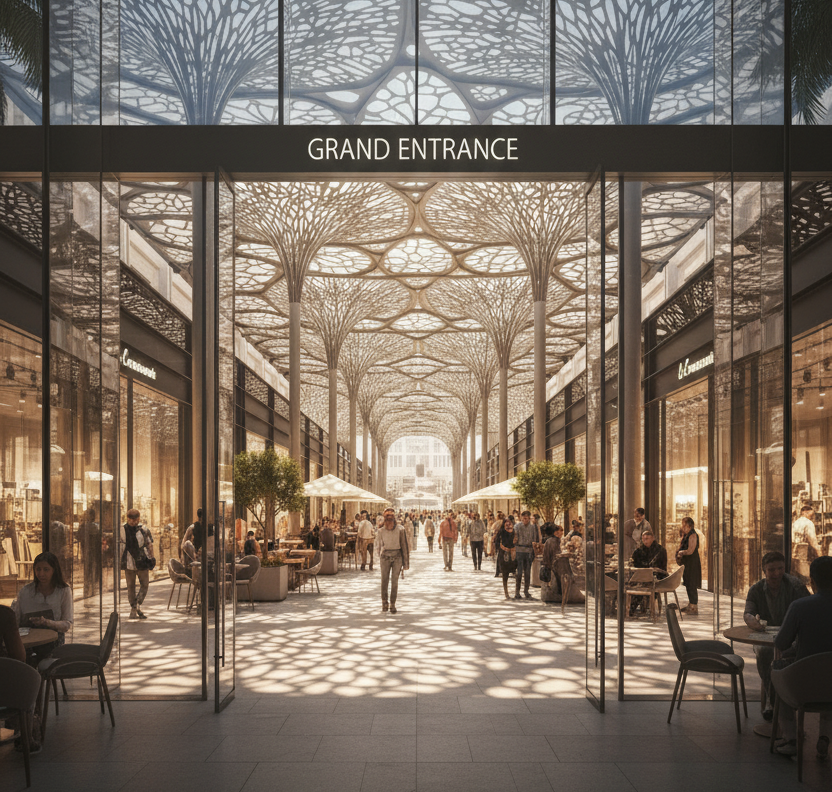“Look & feel.” We hear this phrase all the time in architecture and design meetings. It sounds harmless — even creative — but it’s one of the most misleading ideas in our profession.
Because if design is only about look and feel, then what separates us from AI?
AI can already generate stunning visuals — images that capture attention in seconds. If architecture becomes about aesthetics alone, then yes, AI can easily take over our jobs. But architecture was never meant to be about appearances. It’s about how space shapes life.
Every architect should understand what “sense of space” truly means. I’m not talking about abstract theories. I mean the real, tangible impact of planning — how layout, circulation, and comfort influence how we live, move, and connect with one another.
Take the B1 Mall in Dubai as an example. From the outside, it looks stylish. The glass ceiling looks impressive too — until you realize that in Dubai’s climate, it makes no sense to let direct sunlight pour in. The energy required to cool that space is unimaginable. The segmented shop layouts make flexibility impossible. There’s no visual or spatial connection that encourages people to explore or engage. The result? The mall feels disconnected, and shops struggle to survive.
This could have been a place for families to gather, for casual dinners, for small daily walks. A place of connection — not isolation. But it missed that opportunity because the design focused on how it looks, not how it works.
‘Look & feel’ is only one sense. True architecture satisfies all our senses — through thoughtful planning, human comfort, and meaningful context.
As architects, our responsibility is to shape spaces that enrich people’s lives — spaces that respond to climate, culture, and community. If we don’t do that, AI will. And it will do it faster, cheaper, and better-looking.
Let’s not compete with AI in visuals. Let’s guide it — by designing with purpose, context, and humanity.
📺 Watch the full comparison here:
#DesignBeyondForm #ArchitectureThatMatters #ContextDrivenDesign #UrbanStories

It’s not the form—it’s the context.
Go find out why.




